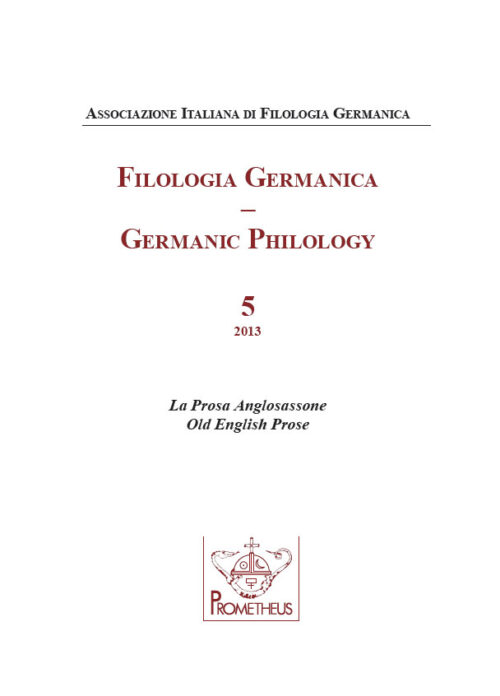Vercelli Homilies and word-formation
DOI:
https://doi.org/10.14672/fg.v5i.2603Abstract
The main aim of this article is to present the major (and some of the minor) principles and patterns of Old English word-formation, using one of the Vercelli Homilies (Vercelli Homily 19) as the main source of the examples. The problems of analysis and classification are also addressed. After some introductory sections (1-4) the levels of analysis are briefly outlined (in section 5), especially phonology, morphology, syntax, semantics, productivity, recursivity, competition. Subsequently, some of the problems in analysing complex words created through word-formation processes are sketched (in section 6), in particular the classification of word-formation patterns, the question of the borderlines between word-formation and inflexion on the one hand, and between wordformation and syntax on the other, and the question of semantic bleaching. In the central sections (7-11), the main types of word-formation are briefly presented: Compounds (7; subdivided according to the word-classes into compound nouns, adjectives, numerals, adverbs); combinations with prefixoids and suffixoids (8); combinations with (locative) particles (9); prefix-formations (10); suffix-formations (11; also subdivided according to the word-classes, in particular suffixes for nouns, adjectives, numerals, adverbs, verbs), and derivation without a suffix (12; also called conversion or zero-derivation). Some important patterns and elements not attested in VercHom 19 but in other Vercelli Homilies are listed in section 13, and loan-influence on word-formation is summarized in section 14 (especially hybrid formations and loan-formations, the latter subdivided into loan-translations, loan-renditions, and loan-meanings). At the end there are a brief conclusion (15) and the references.
Pubblicato
Fascicolo
Sezione
Licenza

Questo lavoro è fornito con la licenza Creative Commons Attribuzione - Condividi allo stesso modo 4.0.
CC-BY-SA



